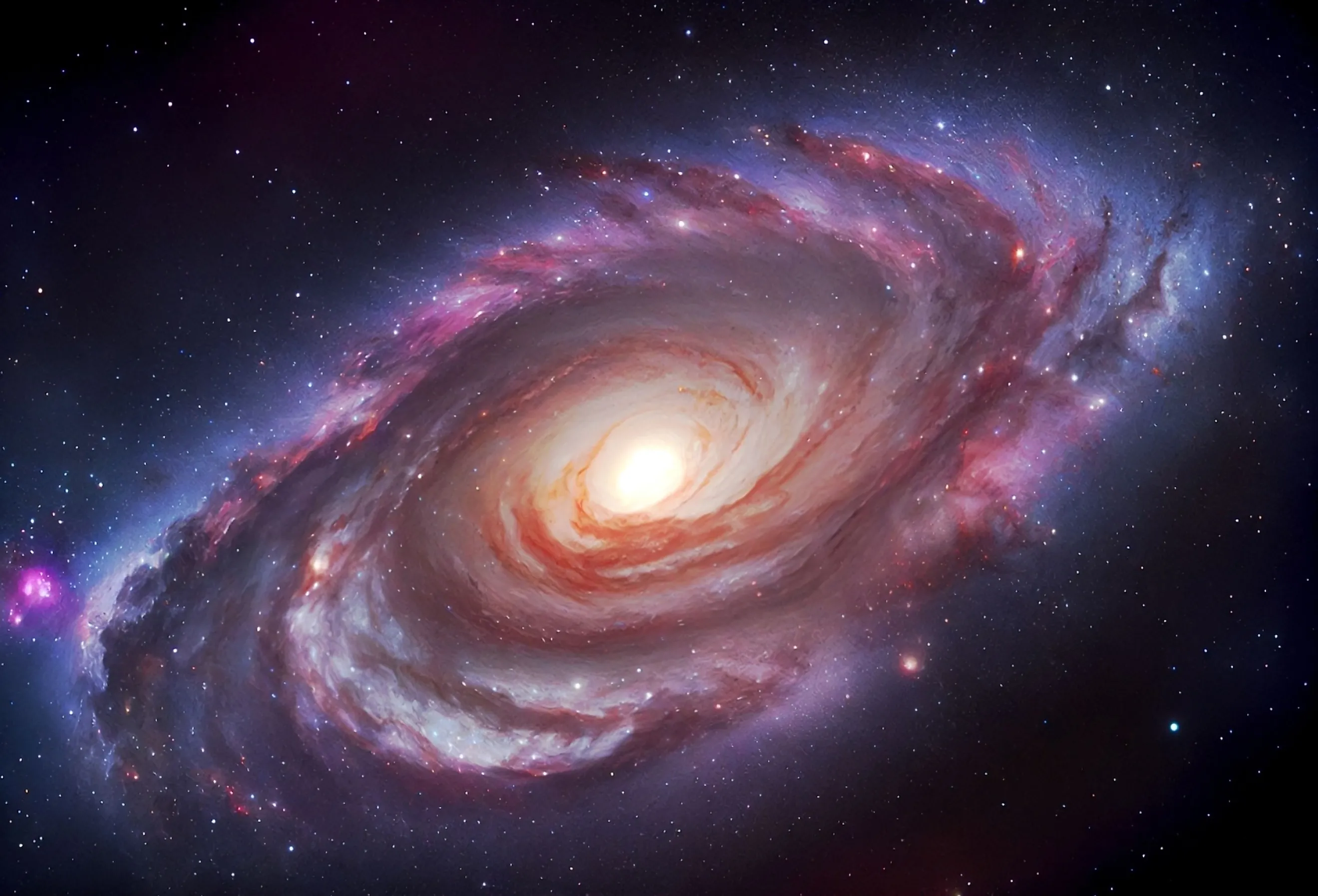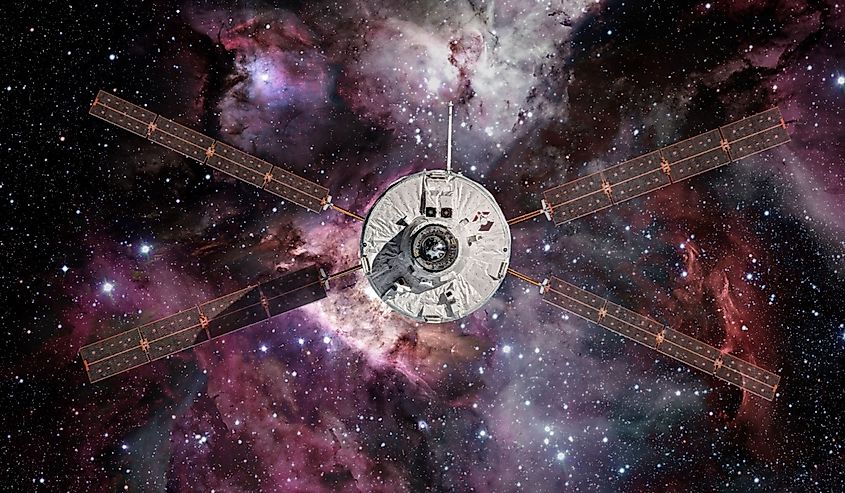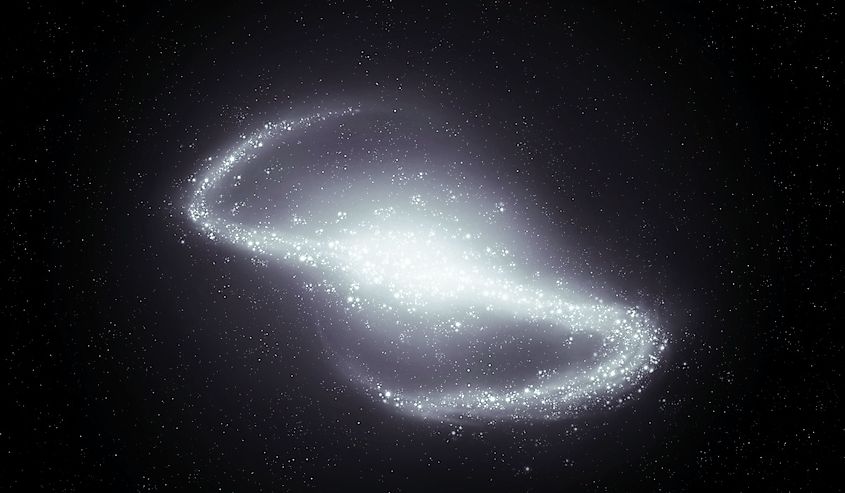
Is the Milky Way Galaxy A Different Shape Than We Thought?
The Milky Way has been an object of fascination for thousands of years. The name of the Milky Way dates back to ancient Greece with a tale between Hera, Zeus and Heracles. While naming the galaxy was easy, getting an idea of its shape has been a challenge. Since our solar system is in the galaxy, scientists cannot get a view outside the galaxy to see its shape properly. However, technology has allowed humans to get a better idea of what the galaxy looks like. The telescope, photography, spectroscopy, and radio astronomy, are all tools that have helped get a better idea of the shape of the Milky Way.
However, new research shows that the flat disk shape scientists believed the Milky Way to look like is wrong. Here is what the new research has to say about the galaxy's shape.
What is The Milky Way?

Before looking at what the new research says about the Milky Way, it is helpful to know more about the Milky Way. The Milky Way is the galaxy that Earth calls home. Similar to other galaxies, the Milky Way is a collection of billions of stars, planets, and other material. These materials stay together because of their common gravity. Some planets in the Milky Way are part of solar systems, others float freely. Between stars and planets, there are clouds of gas and dust called nebulas. These nebulas are mostly composed of hydrogen and helium gases. All these components come together and form the shape humans know as the Milky Way galaxy.
A Brief History of the Milky Way

Looking up at the sky without a telescope, the Milky Way galaxy looks like bands across the sky. The first person to get more insight into the shape of the Milky Way was astronomer and physicist Galileo Galilei. He discovered that there were countless small stars that were light blended together in bands. Later, in the mid-1700s, famous philosopher Immanuel Kant theorized that the Milky Way was actually a rotating disk of stars. He said that since humans are in the disk the galaxy looks like a band. By the 1900s, people gained a better understanding of the nature of the Milky Way and other galaxies. Astronomer Edwin Hubble even created a classification system for galaxies.
The Shape of The Galaxy

Over the past few years, astronomers also learned that galaxies come in three main shapes. They are usually either elliptical, irregular, or spiral-shaped. Most galaxies are spiral-shaped, with prominent arms branching out. This is the case for the Milky Way. The traditional shape people think of when they hear the Milky Way galaxy is a spiral galaxy with four major spiral arms extending out from a thick central bulge of stars. But this traditional portrayal is not as accurate as people thought.
New Research

New measurements suggest that the Milky Way galaxy is a different shape. Space scientists from the Chinese Academy of Sciences recently published new research showing that the shape of the Milky Way is not a flat disc. The astronomers, based in Purple Mountain and National Astronomical Observatories, analyzed different sources of data on the Milky Way. Their aim was to better understand the galaxy's shape.
The team of astronomers used new space technology to look at the distance between individual stars. Overall they measured the distance between 200 stars and put a map together of the Milky Way. They also used data from the European Space Agency's Gaia space telescope for their map. This telescope is special since it precisely observes the movement of stars.
The researchers specifically looked at measuring Cepheid variable stars. These are a type of star that are helpful for astronomers to use in research because their distance apart is easy to measure. While most stars have a variable brightness, making it hard to tell how far away they are, Cepheid stars are different. They change their brightness a regular intervals. Cepheids get brighter and dimmer over days, weeks, and months. Astronomers can track this brightness cycle to measure how far away the star is. Doing this, the scientists were able to create a three dimensional map of over a thousand Cepheid stars in the Milky Way.
Milky Way Findings

The research findings show that the Milky Way probably doesn't have four arms. Instead, the astronomers found two main arms connected to the central bulge of the galaxy. This would mean the Milky Way is a barred spiral galaxy with two main arms instead of four. On the edge of the Milky Way galaxy there are irregular arms disconnected from the central bulge of the galaxy. One possibility as to why the spiral arms aren't connected to the central bulge is that our galaxy may have collided with other galaxies throughout history.
Another major finding was that the Milky Way isn't a flat disc. While the Milky Way is often depicted as a flat disc of stars, the map shows that the galaxy is actually twisted in an, "S" shape. The Milky Way isn't the only galaxy like this. More than half of spiral galaxies have some sort of twist. The new findings show that the Milky Way is pretty normal in terms of galaxy shapes, but humans have been imagining the shape wrong for a long time.
Future Implications
The new model of the Milky Way could be useful for studying future galactic structures. The astronomers involved in the new research say that the map will become more detailed with more observations. Radio sources and the Gaia spacecraft are continuing to make observations about the galaxy.
As space technology advances and humans are able to better understand the universe, people are able to consider deeper unsolved mysteries. One example is the mystery of how Newton's law of gravity operates in galaxies. While the law says that stars and gas at the galaxy's outer edges should slow down, orbiting slower than objects at the center, these objects actually orbit much faster. Scientists theorize this is because of dark matter. However, this is something we are unable to currently observe. As humans gain a better understanding of the universe, scientists may be able to get a better understanding of these mysteries.











